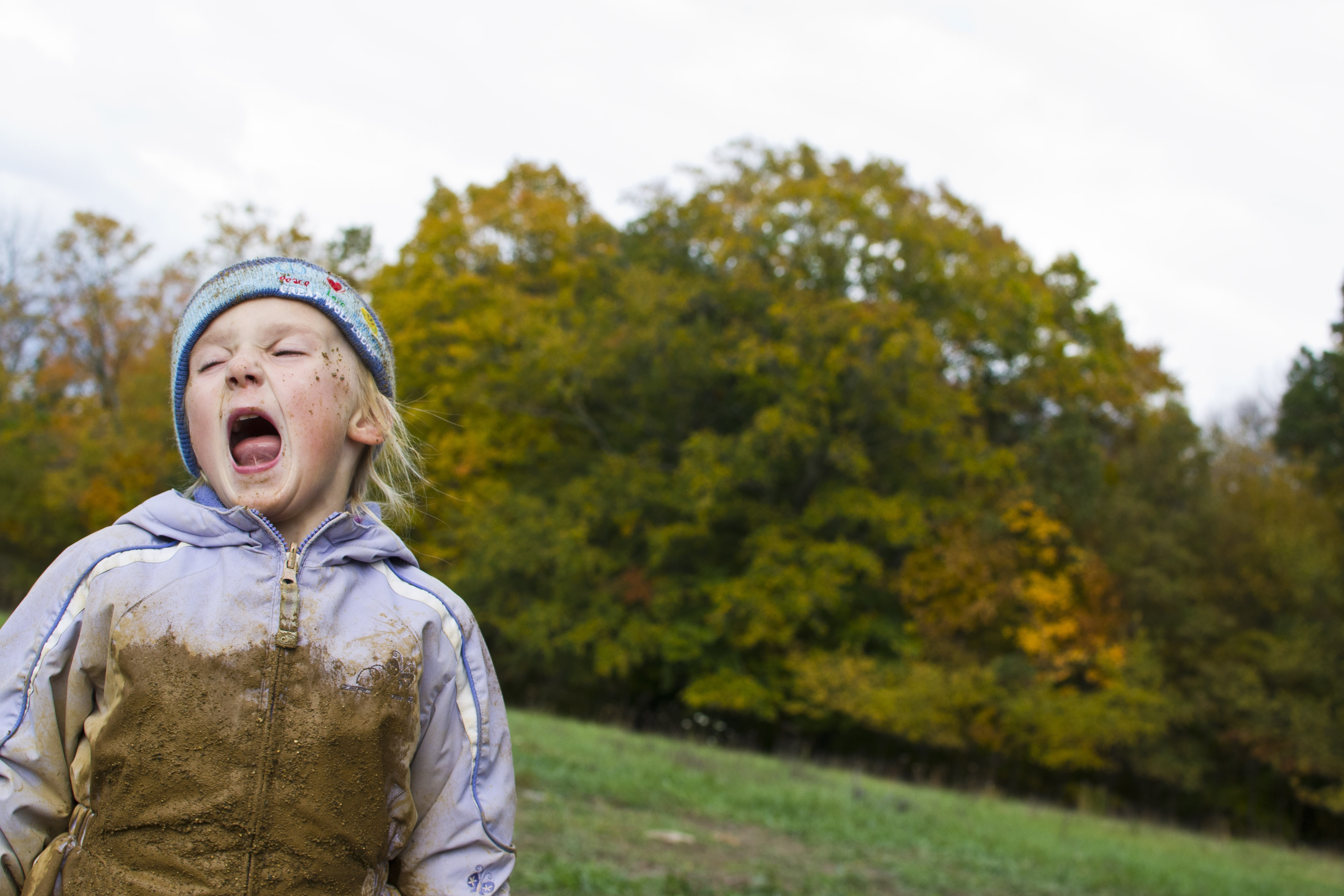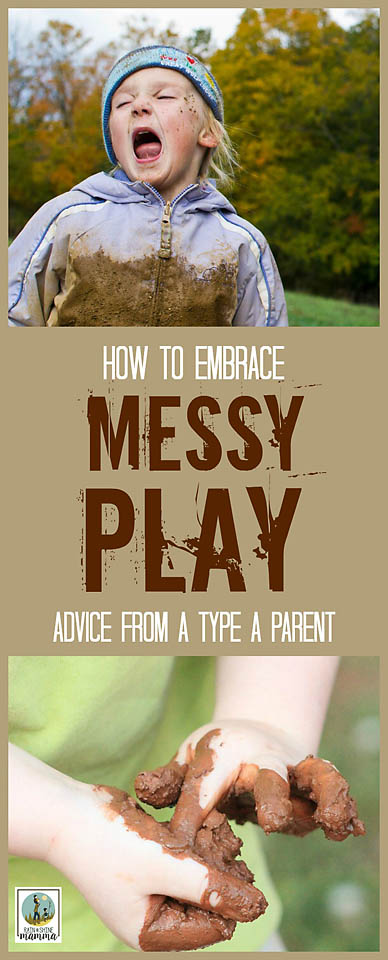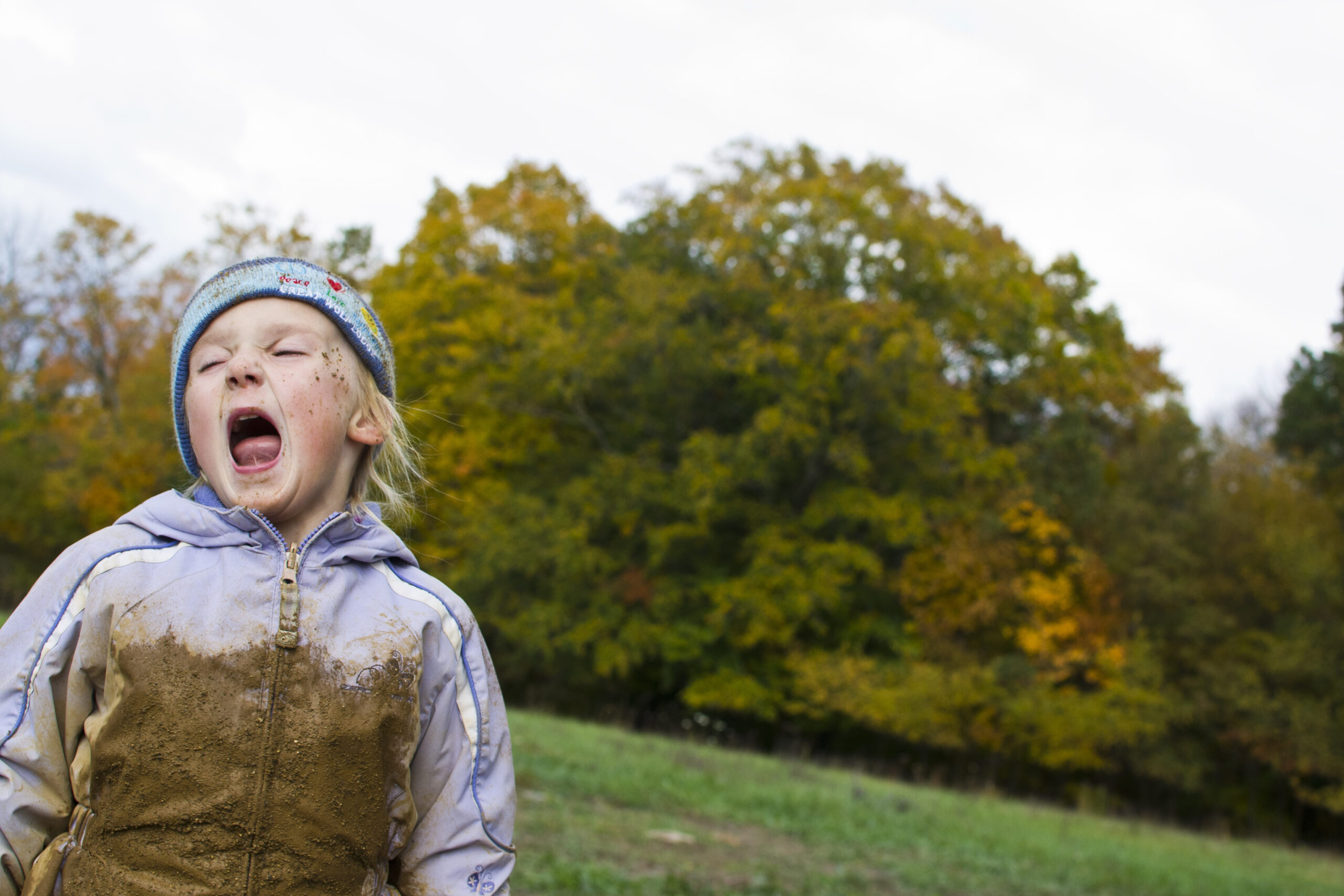Published on March 8th, 2017 Updated on January 10th, 2023 By Linda McGurk
I might as well admit it; I’ve never been one to handle messes well. Although I don’t consider myself a neat freak, I like my home nice and clean, and I like my kitchen counter free from clutter. When my girls ask to make homemade salt dough and proceed to unleash their imagination – along with approximately two pounds of flour, water and salt – on our dining room table, I secretly cringe. Not only because salt dough has a tendency to travel and find its way into EVERY little crack and crevice in the house, but because I know I’m likely the one that will end on my knees scraping it out of the cracks of our hardwood floors later. Maybe my aversion to this type of messy play makes me a tad Type A. Or maybe it just means that I’m human.
Either way, deep down I know that kids – including mine – NEED to be allowed make messes. In child development lingo, this falls under the category of “sensory play,” which simply means play that engages the senses. By seeing, hearing, touching, tasting and smelling, children gain important physical, cognitive, verbal, social and emotional skills. That’s a fancy way of saying that children need hands-on exploration to learn new things, how to interact with others and make sense of the world around them. In fact, research has found that children (and adults!) learn best when they engage all of their senses.

That’s why, when given the opportunity, children will automatically gravitate toward sensory play and stimulation. Even babies do this constantly, for example by grasping objects to feel them out and sticking them in their mouths to find out what they taste like. Likewise, toddlers often explore food by playing with it. This is hard for some parents to stomach, but there’s good reason why children are wired this way. For example, one study from the University of Iowa showed that toddlers learn the names of food quicker when they are allowed to play with it.
Definition of messy play
Sensory or messy play usually happens when:
- the child is engaging all of his/her senses, especially touch
- there is an abundance of materials to manipulate, combine and mold
- the focus is on the creative process, rather than the finished product
Not only does messy play help children learn the basics of life and pave the way for academic learning later on. But if we deprive children of of opportunities to engage in messy play, we also risk depriving them of normal sensory development, according to pediatric occupational therapist Angela Hanscom, author of Balanced and Barefoot. Hanscom often points out that the recent rise in sensory issues among young children at least in part can be explained by parents’ aversion to messes and the trend to keep children neat and tidy at all times.
If this is something that you struggle with, believe me when I say that it’s possible to encourage messy play AND keep a neat and tidy home. Here’s how:
Messy play advice for Type A parents
- Read up on the benefits for children of getting dirty. In fact, tasting and playing with dirt during outdoor play can help boost your child’s immune system and help prevent autoimmune diseases like asthma and allergies. I promise you won’t be on the fence about them getting muddy again!
- Encourage sensory play outside. The more opportunities your kids have to engage in messy play outdoors, the less the need for turning your house into a salt dough-covered wasteland. One simple way to encourage sensory play outside is by creating a mud kitchen, painting with mud or just letting your kids engage freely with nature.
- Be selective with materials. If there are some materials that you absolutely stand the kids using inside, reserve them for outside use. I’ll gladly provide my girls with water colors any time, but for the sake of my mental health they’re only allowed to use finger paints outside.
- Have a designated area in the house for messy play. Keeping the messes contained in one area of the house can help make it more bearable for neat freak parents. For example, we have a large, low-slung table in our basement that is often used for messy activities. I’m also much more lenient about messes in their own rooms than the rest of the house. Out of sight, out of mind.
- Dress for it. Decide which of your child’s clothes fall into the category “school clothes” and which ones are “play clothes.” Make sure he or she wears play clothes for messy activities and accept the fact that they may get torn, stained and otherwise unsalvageable.
- Establish routines for clean-up. My girls know that they can get as messy as they want while playing outside, whether they’re using paint, mud, water or some other medium. But they also know that the dirt stops at the door step to the mud room, where they shed all their clothes before entering the house and going straight to the bathroom for cleanup.
- Practice with cooking and baking. As anybody who has ever spent time in the kitchen with children knows, this is Ground Zero for messes. That’s why cooking and baking with your kids is not only a great learning experience for them – it’s also an exercise in accepting messes for you. If nothing else, you’ll have a yummy dinner or a batch of homemade cookies to enjoy after the cleanup. That’s pretty good incentive in my book.
Warmer weather is on its way, which means my kids will spend even more time getting dirty outside. And you know what? When I see them coming back from the backyard covered in mud from head to toe, I can honestly say that I embrace it. Since I became a parent, I have learned that the outdoors is where both a child’s need for messy play and a parent’s need for sanity can be satisfied. Now that’s what I call a win-win both for kids and Type A parents.



I had a type A mom…..One of my most vivid childhood memories is of sitting on my trike in my training panties ( it was in Tucson Az and HOT ) and watching my mom carting off the fingerprint my sibs and I had received as a gift and throwing it in the ally trashcan……we only got to use them one time and I just loved it…….I was baffled and never forgot it……mom also did not allow us to cook so I had to learn that in Home Ec in high school…….my motto now is ” dirt ? It washes off…”
Oh no, sorry you had a bad experience:o( I’m still working on my Type A tendencies and hope that my extremely laid-back approach to messy outdoor play in some way balances out my need for the house to stay tidy. And I love your motto! It sounds a lot like mine, “A little dirt won’t hurt”!
So true! None of us likes the messes, but the smile really make the mess worthwhile!
Yes, absolutely!
Oh, I hear you! When the glitter comes out, I can feel my blood pressure rising! It just gets everywhere. My solution is a huge table cloth that the kids know is reserved for crafting and messy play. After the play, I shake it outside and that really helps:)
That’s a good idea – thanks for sharing!